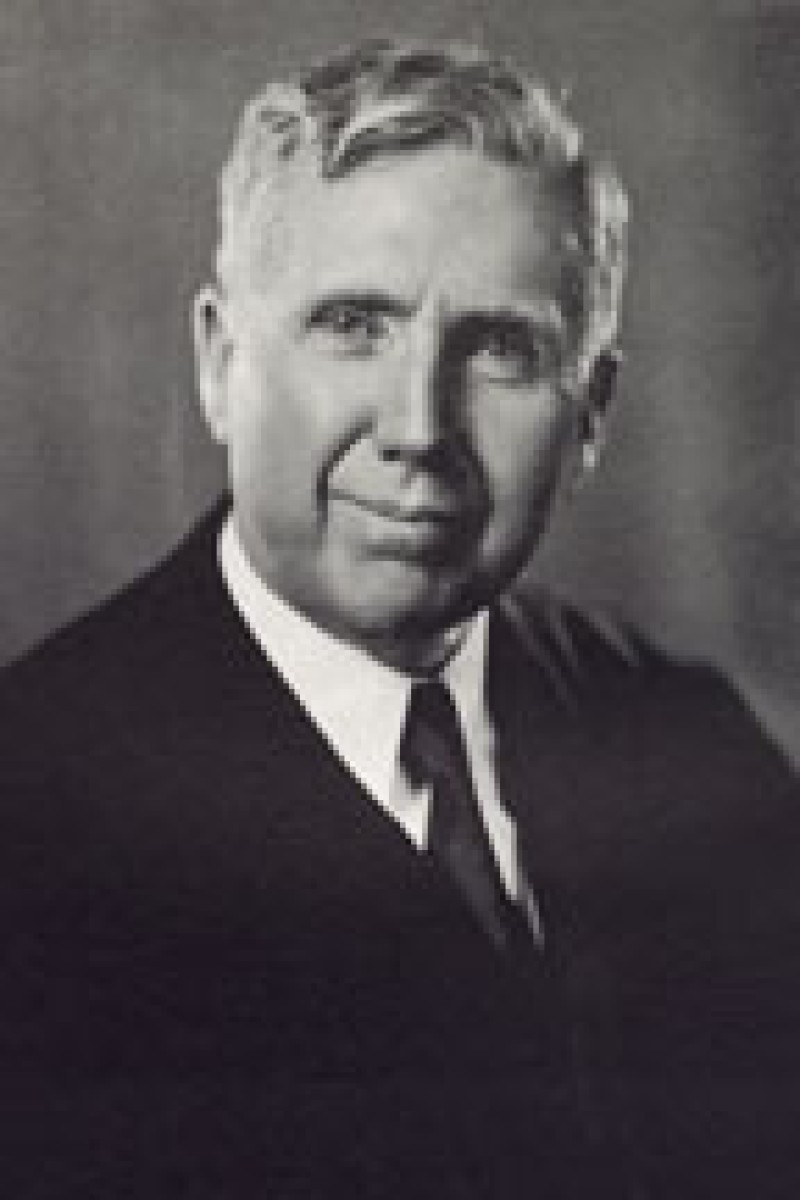William Lincoln Hart
William Lincoln Hart was held in high esteem by his colleagues. Chief Justice Weygandt stated at his death, “Judge Hart was a conscientious and scholarly member of the court. He was always interested in studying each case carefully because as a member of a court of last resort he knew that if the litigants did not receive justice there, they never would get it.”
Hart was born Feb. 5, 1867 in Highlandtown, Ohio, the son of Benjamin Franklin and Ariel Dreghorn Hart. Hart began teaching in the school at Highlandtown in 1885, and taught in area schools through 1892. In 1888, he became a student at Mount Union College beginning a relationship that would continue for 50 years.
During his college years, he lived with the family of Thomas Wilson, owner of the Minerva News. He worked for Wilson as a journalist to supplement his teaching salary. He later worked as city editor of the Alliance Daily Critic from 1893 to 1895 to help pay for his studies at the University of Michigan, where he earned his bachelor of laws degree in 1897. In 1920, Mount Union credited Hart with work toward his undergraduate degree and awarded him a bachelor’s degree and a place retroactively in the class of 1896. Coincidently, Hart’s son, Ian Bruce Hart, received his bachelor’s degree the same day.
Hart was admitted to the Ohio bar in 1897 and established the law practice of Rogers and Hart in Alliance in 1898. Upon the death of his partner, Hart formed the firm of Hart and Koehler with Hugo C. Koehler in 1903. Hart began teaching at Mount Union in 1918 as a contribution to the war effort. He continued to lecture there for 20 years and was a contributor to the annual review of Ohio case law in Ohio Law magazine from 1921 to 1938. He soon gained a reputation as an able advocate, as well as a devoted student of the law.
Hart first was elected to the Supreme Court of Ohio for a brief term in 1934, ending in January 1935. He was then elected to a six-year term in 1938, at the age of 71. Hart was re-elected in 1944 and 1950. He retired at the age of 89, due to ill health.
Superior Films Inc. v. Department of Education (1953) was one of several cases that went before the Court involving film censorship. The Division of Film Censorship was established in 1913 and transferred to the Ohio Department of Education in 1921, continuing until 1954. It evaluated thousands of movies prior to release in Ohio. In a series of cases between 1952 and 1954, the U.S. Supreme Court declared invalid the tests used by the Division of Film Censorship to censor films, thus challenging the constitutionality of the Ohio Motion Pictures Censorship Act based on the First and 14th Amendments to the U.S. Constitution.
In this decision, Superior Films submitted the motion picture “M” to the Division of Film Censorship for approval. The division issued a certificate rejecting the film for distribution and exhibition in Ohio on the grounds that the film was “harmful.” Superior Films filed a petition with the Supreme Court seeking to have the Court vacate the order of rejection. The second case involved the film “Native Son” and a request by Classic Pictures to have the film re-evaluated. The three cases challenged the constitutionality of the Division of Censorship and the fees they assessed to review films. Hart stated in his Court opinion: “As we view it, the U.S. Supreme Court has not ipso facto taken away all community control of moving pictures by censorship, and this court will not do so under the claim of complete unconstitutionality of censorship laws…we cannot say that the defendant abused his discretion in refusing to approve the picture film in question. The division, representing the public interest, has made its decision and this court cannot find affirmatively that it was in error in so doing.”
After his retirement from the bench, Hart continued to contribute to the field of legal jurisprudence as an editorial writer for the Lawyers Cooperative Publishing Company of Rochester, N.Y. Hart wrote the chapter on Mandamus in 35 Ohio Jurisprudence (2d).
Hart married Ida B. Caskey on Sept. 15, 1897 and they had two sons. Ida died Dec. 27, 1947. Hart married his second wife, Nova E. Westfall, on Jan. 1, 1949. He died April 29, 1962 and funeral services were at the First Methodist Church of Alliance, with burial in Alliance City Cemetery.

b. Feb. 5, 1867
d. April 29, 1962
98th Justice of the Supreme Court of Ohio
TERM
Jan 1, 1939
to Jan 1, 1957
